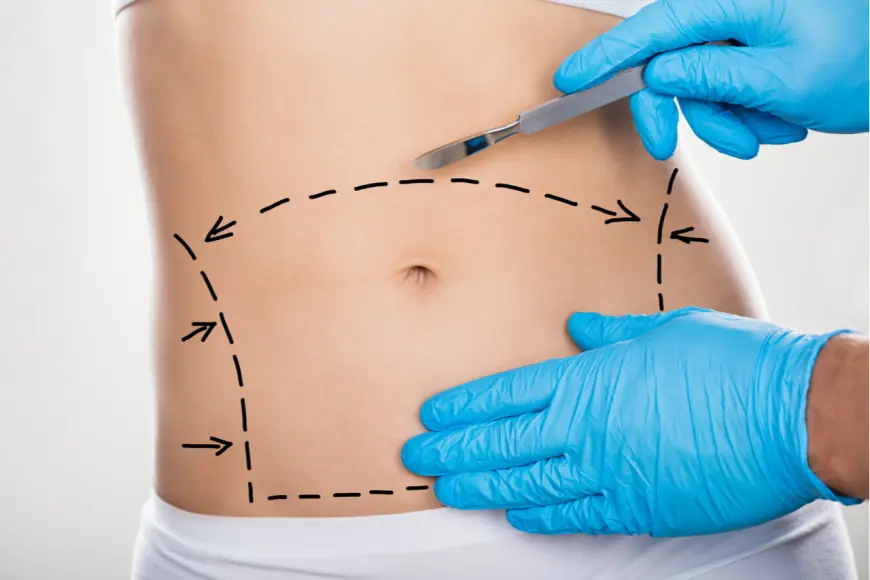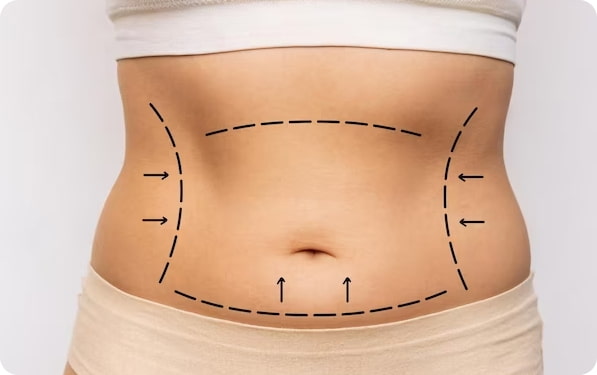What Does a Tummy Tuck Surgery Actually Involve?
What Does a Tummy Tuck Surgery Actually Involve?

A Tummy Tuck Dubai , medically known as abdominoplasty, is a comprehensive surgical procedure designed to reshape and flatten the abdomen by removing excess skin and fat and tightening the underlying abdominal muscles. It is a significant surgical intervention often sought by individuals who have experienced considerable weight fluctuations, pregnancy, or the natural aging process, which can lead to loose skin, stubborn fat deposits, and weakened abdominal muscles that diet and exercise alone cannot fully address.
Understanding the Need for a Tummy Tuck
Many factors can contribute to changes in the abdominal area, making it challenging to achieve a toned physique through conventional methods. Significant weight loss can leave behind saggy skin that lacks elasticity and cannot conform to the body's new contours. Similarly, pregnancy can stretch abdominal muscles and skin, sometimes resulting in a condition called diastasis recti, where the abdominal muscles separate. A tummy tuck directly addresses these concerns, offering a solution for those seeking a more contoured and confident silhouette.

The Tummy Tuck Procedure: A Step-by-Step Overview
A tummy tuck is considered a major surgery due to its invasive nature, the duration of anesthesia, and the recovery period involved. The procedure typically takes one to three hours and is performed under general anesthesia, ensuring the patient is asleep and pain-free throughout.
The process generally involves several key steps:
1. Anesthesia
Before the surgery begins, general anesthesia is administered to ensure the patient's comfort and to prevent any pain during the procedure.
2. Incision
The surgeon makes an incision, typically horizontally, between the hip bones, just above the pubic hairline. For a full tummy tuck, this incision usually extends from hip bone to hip bone. In some cases, a second incision around the navel may be necessary, especially for a complete abdominoplasty. Mini tummy tucks, which address smaller areas, may require a less extensive incision.
3. Muscle Repair
A crucial step in a tummy tuck is the tightening of the abdominal muscles (fascia) with sutures. This addresses weakened or separated muscles, enhancing the abdominal area's shape and providing a more toned appearance.
4. Excess Skin and Fat Removal
Following muscle repair, the surgeon removes any excess skin and fat from the abdominal region. This can be achieved through excision for skin and sometimes liposuction for stubborn fat deposits, particularly around the hips, flanks, or pubic area, to treat a larger area. The remaining skin is then pulled down and repositioned for a smoother contour.
5. Belly Button Repositioning
For a full tummy tuck, the navel may need to be repositioned to ensure a natural look after the significant changes to the abdominal skin.
6. Closure
Once the necessary adjustments are made, the surgeon closes the incisions using sutures or other appropriate methods.
7. Recovery Area
After the surgery, the patient is moved to a recovery area where they are monitored as they emerge from the anesthesia. While some patients may be able to go home the same day, a hospital stay of 1-3 days for observation is common, especially for standard abdominoplasty in Dubai.
Types of Tummy Tucks
There are different types of tummy tuck procedures, tailored to individual needs and the extent of correction required:
-
Traditional (Classic) Tummy Tuck: This is the most common type, suitable for individuals with a significant amount of loose skin around their belly. It involves a hip-to-hip incision and addresses excess skin, fat, and muscle laxity across the entire abdomen.
-
Partial (Mini) Tummy Tuck: This option is for those with smaller amounts of excess skin, typically below the belly button. It involves a shorter incision and primarily treats the area below the navel.
-
Extended Abdominoplasty: This procedure is designed for patients with more extensive excess skin and fat, often extending to the hips and lower back areas. It involves a more significant modification to reshape a larger portion of the body.

Before and After the Procedure
The journey to a contoured abdomen with a Tummy Tuck in Dubai involves careful preparation and a structured recovery period.
Before Surgery
An initial consultation is the foundational step, where a qualified surgical team assesses the patient's medical history, current health status, and aesthetic goals. This is an opportunity to discuss the different types of procedures and determine the most suitable approach. Patients receive detailed pre-operative instructions, which may include guidelines on diet, medication adjustments, and cessation of smoking. Arranging for post-operative support, such as transportation home and assistance during the initial recovery period, is also crucial.
After Surgery
Following the procedure, patients can expect some swelling and bruising, which typically subside within weeks. A structured postoperative plan supports healing, often including the use of compression garments, gradual mobility, and prescribed medications. Regular follow-ups ensure progress monitoring. While the final look of a scar cannot be precisely predicted, the incision is strategically placed to be easily hidden under swimwear or underwear.
What's Your Reaction?
 Like
0
Like
0
 Dislike
0
Dislike
0
 Love
0
Love
0
 Funny
0
Funny
0
 Angry
0
Angry
0
 Sad
0
Sad
0
 Wow
0
Wow
0




















































